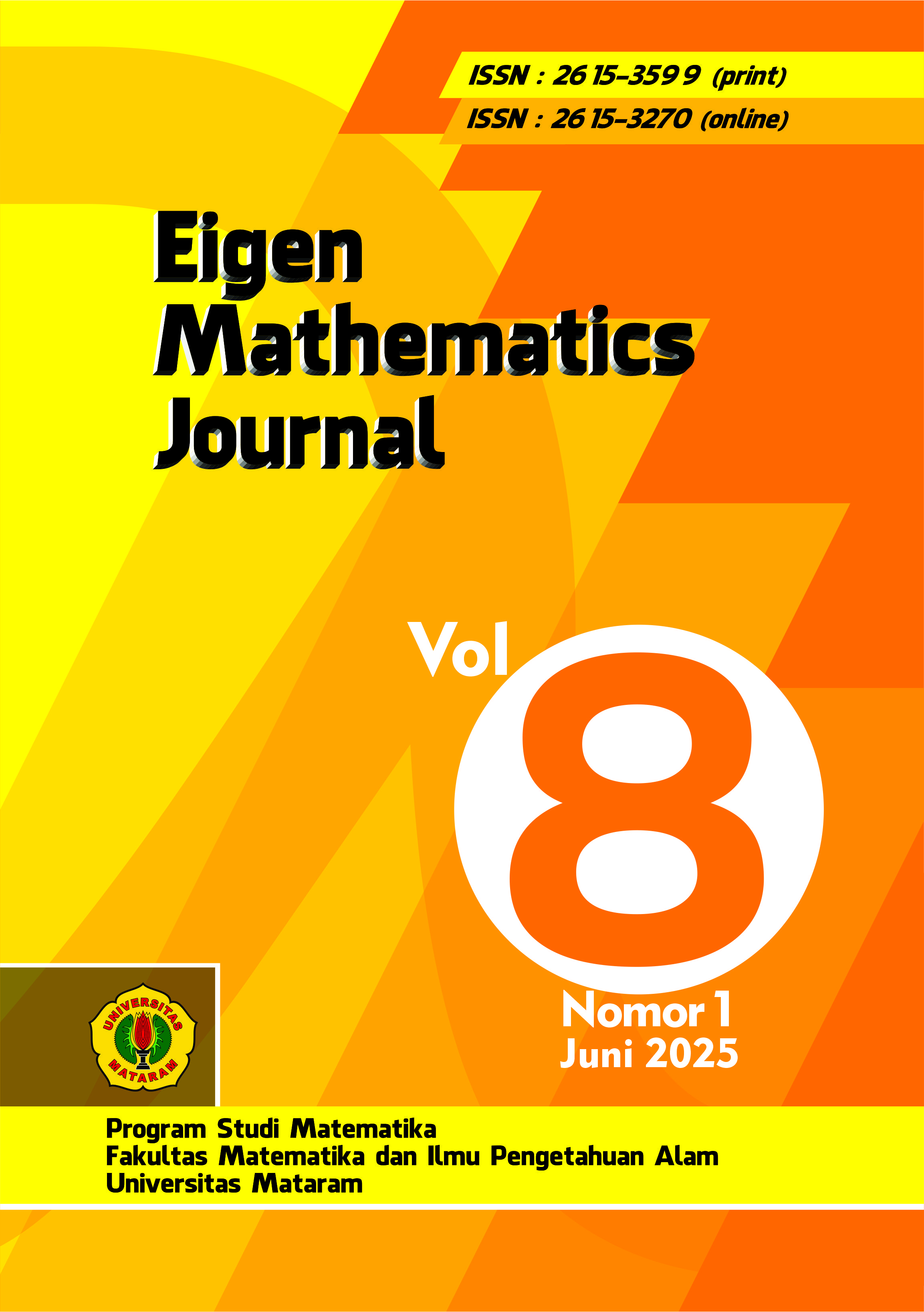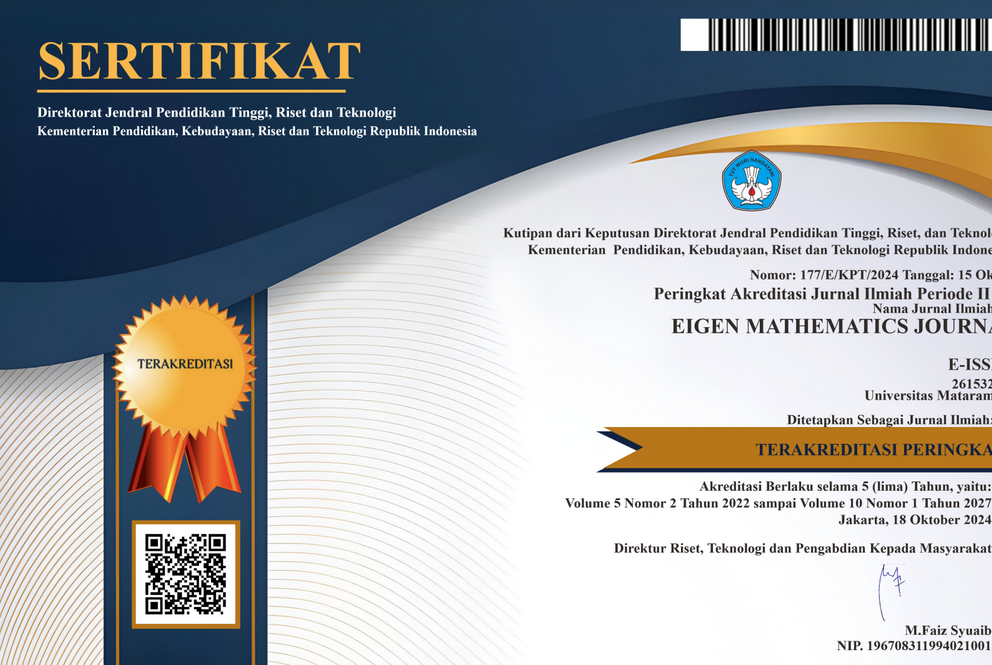Analysis Time Series (ARIMA): To determine the Development of Oil Exports in Indonesia
DOI:
https://doi.org/10.29303/emj.v8i1.265Keywords:
Time Series Analysis, ARIMA, Exports, Oil Results, IndonesiaAbstract
Oil exports are the largest export in Indonesia. Indonesia's oil exports from year to year tend to fluctuate and in the end continue to decline, however in the last three years exports of oil products have continued to increase from the previous year. This research aims to analyze the development of oil exports in Indonesia. The data used in this research is doil export data from 1996 to 2023 obtained from data Indonesian Central Statistics Agency (BPS). The method used to analyze development of oil exports in Indonesia is Autoregressive Integrated Moving Average (ARIMA). The research results show that Indonesia's oil exports have experienced significant fluctuations from year to year, with a quite striking decline in export volume in recent years. The ARIMA model (2,2,2) was identified as the best model for predicting future behavior from oil export data. This model succeeds in describing the intrinsic patterns in the export data well. Using the ARIMA (2,2,2) model it is known that forecasting results development of oil exports in Indonesia (2024-2035) will experience an increase from the previous year.References
I. P. Masitha and E. Pangidoan, “Pengaruh suku bunga, nilai tukar rupiah, inflasi, ekspor dan impor terhadap cadangan devisa di indonesia,” Jurnal Ilmiah Akuntansi dan Keuangan, vol. 8, no. 1, pp. 59–65, 2020.
R. B. Silitonga, Z. Ishak, and M. Mukhlis, “Pengaruh ekspor, impor, dan inflasi terhadap nilai tukar rupiah di indonesia,” Jurnal Ekonomi Pembangunan, vol. 15, no. 1, pp. 53–59, 2017.
R. Ulfa and D. Andriyani, “Analisis faktor-faktor yang mempengaruhi ekspor komiditi non migas di indonesia tahun 1985-2017,” Jurnal Ekonomi Regional Unimal, vol. 2, no. 3, pp. 128–140, 2019. https://doi.org/10.29103/jeru.v2i3.1712.
N. Laili, “Analisis daya saing dan faktor-faktor yang mempengaruhi ekspor produk alas kaki indonesia ke amerika serikat ditinjau dalam perspektif ekonomi islam,” Jurnal Ilmiah Ekonomi Islam, vol. 7, no. 2, pp. 1019–1029, 2021. https://doi.org/10.29040/jiei.v7i2.2385.
M. Mustika, H. Haryadi, and S. Hodijah, “Pengaruh ekspor dan impor minyak bumi terhadap pertumbuhan ekonomi indonesia,” Jurnal Perspektif Pembiayaan dan Pembangunan Daerah, vol. 2, no. 3, pp. 107–118, 2015. https://doi.org/10.22437/ppd.v2i3.2267.
F. Arza and M. Murtala, “Pengaruh ekspor hasil minyak dan impor minyak bumi terhadap pertumbuhan ekonomi di indonesia,” Jurnal Ekonomika Indonesia, vol. 10, no. 1, pp. 23–32, 2021. https://doi.org/10.29103/ekonomika.v10i1.4506.
M. U. M. Putra and S. Damanik, “Pengaruh ekspor migas dan non migas terhadap posisi cadangan devisa di indonesia,” Jurnal Wira Ekonomi Mikroskil, vol. 7, no. 2, pp. 245–254, 2017. https://ejurnal.mikroskil.ac.id/index.php/jwem/article/view/381.
E. A. Fitria, “Pengaruh ekspor, tabungan bruto, dan pembentukan modal bruto terhadap pertumbuhan ekonomi,” Growth: Jurnal Ilmiah Ekonomi Pembangunan, vol. 4, no. 2, pp. 109–122, 2022. https://e-journal.unimaju.ac.id/index.php/GJIEP/article/view/10.
D. Kertayuga, E. Santoso, and N. Hidayat, “Prediksi nilai ekspor impor migas dan non-migas indonesia menggunakan extreme learning machine (elm),” Jurnal Pengembangan Teknologi Informasi dan Ilmu Komputer, vol. 5, no. 6, pp. 2792–2800, 2021. https://j-ptiik.ub.ac.id/index.php/j-ptiik/article/view/9428.
N. K. Rumokoy, “Pelanggaran hukum terhadap penggunaan minyak dan gas bumi (migas) yang terkandung di dalam wilayah hukum pertambangan indonesia oleh pihak yang tidak berwenang oleh: Nike k. rumokoy,” Jurnal Hukum Unsrat, vol. 22, no. 5, 2016. https://ejournal.unsrat.ac.id/v3/index.php/jurnalhukumunsrat/article/view/10756/10344.
N. Salwa, N. Tatsara, R. Amalia, and A. F. Zohra, “Peramalan harga bitcoin menggunakan metode arima (autoregressive integrated moving average),” Journal of Data Analysis, vol. 1, no. 1, pp. 21–31, 2018. https://jurnal.usk.ac.id/JDA/article/view/11874.
T. Yunita, “Peramalan jumlah penggunaan kuota internet menggunakan metode autoregressive integrated moving average (arima),” Journal of Mathematics: Theory and Applications, pp. 16–22, 2020. https://doi.org/10.31605/jomta.v2i1.777.
A. A. Kurniasi, M. A. Saptari, and V. Ilhadi, “Aplikasi peramalan harga saham perusahaan lq45 dengan menggunakan metode arima. sisfo: Jurnal ilmiah sistem informasi, 5 (1), 13–26,” 2021. https://doi.org/10.29103/sisfo.v5i1.4849.
R. A. Wulandari and R. Gernowo, “Metode autoregressive integrated movingaverage (arima)dan metode adaptive neuro fuzzy inference system (anfis) dalam analisis curah hujan,” Berkala Fisika, vol. 22, no. 1, pp. 41–48, 2019. https://ejournal.undip.ac.id/index.php/berkala fisika/article/view/23483.
A. Yunika and M. Ahsan, “Pengendalian kualitas proses produksi hasil gula kristal putih di pg djatiroto ptpn xi menggunakan diagram kontrol maximum multivariate cumulative sum (max-mcusum) berbasis residual model multioutput least square support vector regression (mls-svr),” Jurnal Sains dan Seni ITS, vol. 12, no. 1, pp. D80–D87, 2023. http://dx.doi.org/10.12962/j23373520.v12i1.101891.
Downloads
Published
How to Cite
Issue
Section
License

This work is licensed under a Creative Commons Attribution-NonCommercial-ShareAlike 4.0 International License.
All articles published in the Eigen Mathematics Journal will be available for free reading and downloading. The license applied to this journal is Creative Commons Attribution-Non-Commercial-Share Alike (CC BY-NC-SA).






